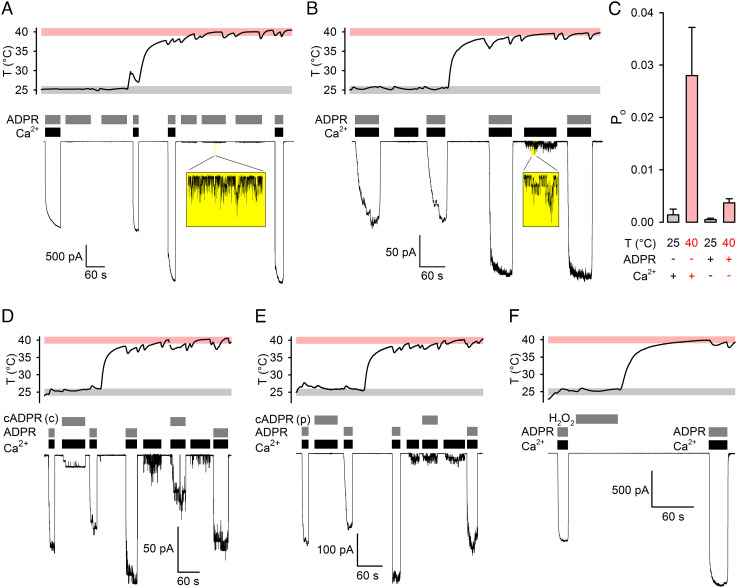Fig. 1.
ADPR+Ca2+ is required to efficiently open TRPM2 even at 40°C. A, B, D–F, Simultaneous recordings of patch temperature (Top Panels) and macroscopic T5L TRPM2 currents (Bottom Panels). In all temperature panels, gray and rose boxes highlight 25±1°C and 40±1°C ranges, respectively; membrane potential (Vm) was −80 mV. A, B, TRPM2 currents at 25°C and 40°C in (A) saturating (32 μM) ADPR + zero Ca2+ or (B) saturating (107–134 μM) Ca2+ + zero ADPR. Resolvable unitary currents (see Insets) are quantified by bracketing exposures to saturating (107–134 μM) Ca2+ plus saturating (A, 32 μM) or quasi-saturating (B, 3.2 μM) ADPR. C, Estimated Po under semiliganded conditions at 25°C and 40°C. Bars represent mean ± SEM (n = 6–13). D, E, TRPM2 currents evoked by cADPR at 25°C and 40°C. Untreated (D) “crude’’ (cADPR(c)) or enzymatically decontaminated (E) “pure’’ (cADPR(p)) cADPR (10 μM) was applied in the presence of saturating (107–134 μM) Ca2+. Currents are quantified by bracketing exposures to saturating (107–134 μM) Ca2+ + quasi-saturating (3.2 μM) ADPR at both temperatures. F, No TRPM2 current evoked by 1-min treatment with 10 mM H2O2 followed by heating, and large currents activated in the same patch by exposures to saturating (32 μM) ADPR + saturating (107–134 μM) Ca2+.

